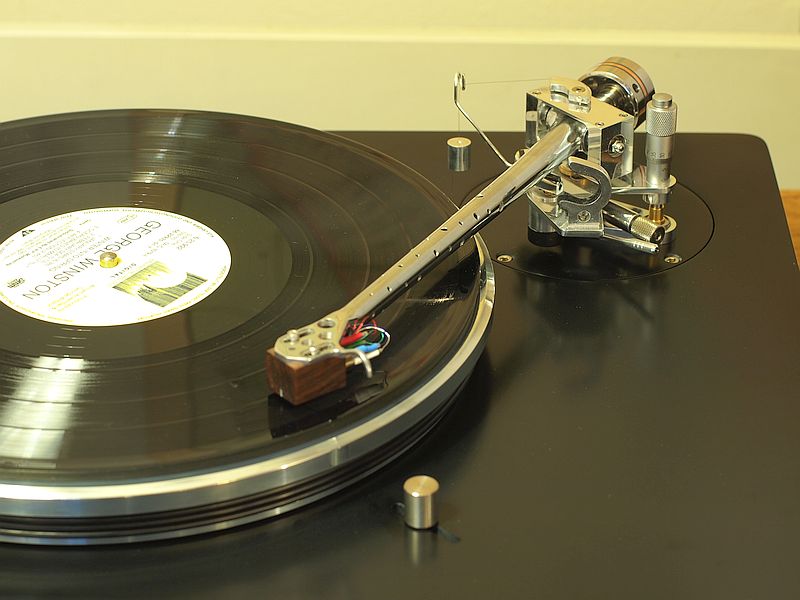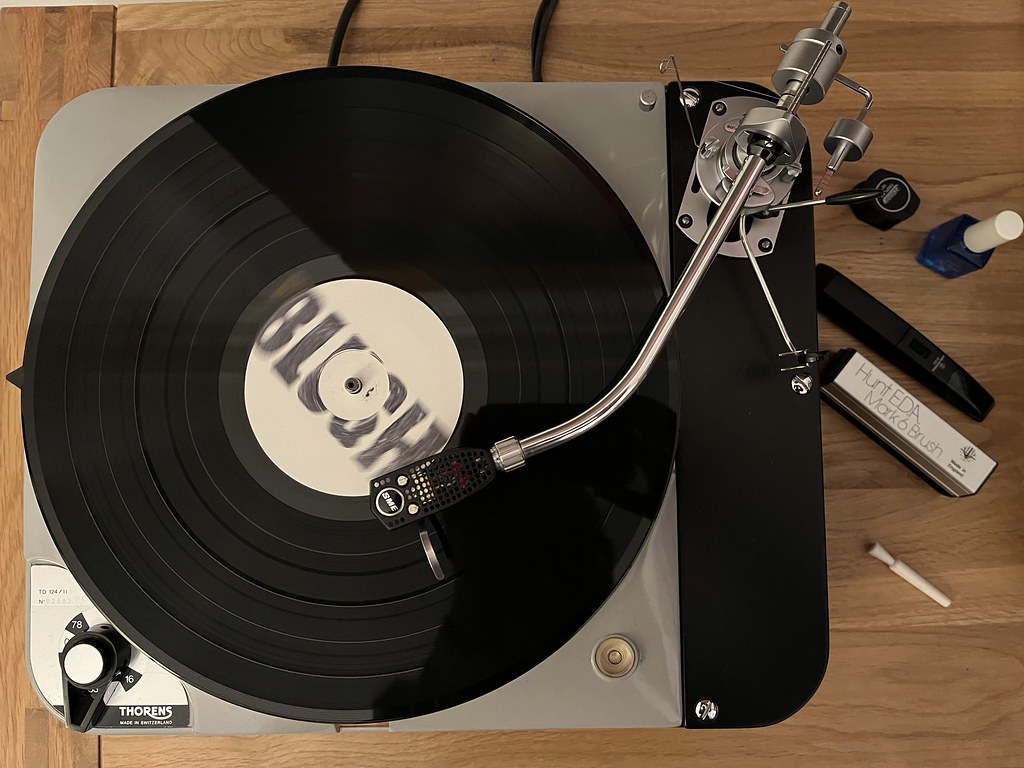Time for a rant:
To my mind that is just totally unacceptable at that price. Ergonomics are important. A good user interface design is essential. To be honest this is one of my biggest criticisms with modern audio.
This is my turntable. A Thorens TD-124 fitted with a SME 3009. It is 1950s technology, though my specific example dates from the mid to late-60s. I use it because I like the sound it produces, but also because it is a simply stunning piece of aesthetic and ergonomic design.
To recap some 1950s functionality:
All four record speeds available with a fine-speed adjustment and strobe.
Built in clutch for fast start in a broadcast environment.
Pop-up adapter for ‘dinked’ 45s.
Easily levelled from above via thumb-wheels and built in spirit level (though mine is a little off!).
Armboard can be removed from above in seconds, the chassis can take 9” or 12” arms.
Once correctly floated the arm can be adjusted for tracking force without using a stylus balance.
The arm can be very easily aligned on its sliding base.
Bias, azimuth, VTA etc are all similarly simple adjustments.
Cartridges can very easily be fitted and removed for inspection or swapped.
The very best design is both functional and beautiful. Miss one aspect and the other is hugely diminished. In 2023 I expect more than more than this, not less, especially at these prices!



